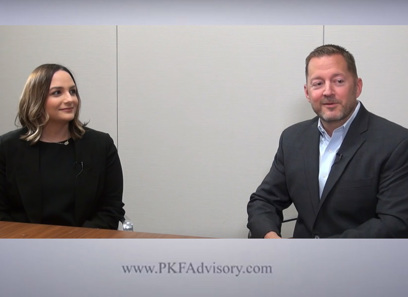The Impact of Economic Factors on the M&A Outlook: What You Need to Know for 2025
The Impact of Economic Factors on the M&A Outlook: What You Need to Know for 2025
Blog Article
The Influence of Mergers and Acquisitions on Market Dynamics and Competitors
The landscape of procurements and mergings offers an intricate interaction in between cultivating development and potentially undermining competitive integrity within markets. As companies pursue strategic alignments to boost performance and technology, the implications on customer option and market prices warrant cautious scrutiny.
Overview of Mergers and Acquisitions
Mergers and acquisitions (M&A) play a crucial duty in forming the landscape of contemporary company, as companies seek to enhance their affordable side and accomplish tactical objectives. M&A purchases involve the debt consolidation of firms or properties with various economic deals, including mergings, where 2 firms incorporate to develop a new entity, and procurements, where one business purchases an additional outright. These activities are driven by a myriad of factors, such as the search of synergies, diversification of product offerings, and the wish to get in new markets.
The M&A process typically entails several phases, including tactical planning, due persistance, negotiation, and assimilation (Emerging Market Opportunities). Companies perform extensive evaluations to determine potential targets that line up with their development strategies and evaluate the monetary and functional effects of a transaction. Governing factors to consider likewise play an essential function, as antitrust laws are created to avoid monopolistic methods that can harm competitors
As companies browse the complexities of M&A, the results can significantly affect stakeholders, consisting of clients, investors, and employees. Consequently, understanding the dynamics of M&A is necessary for reviewing their implications within the broader context of market habits and affordable placing.
Positive Impacts on Market Characteristics
The consolidation of firms via purchases and mergers can lead to substantial favorable impacts on market dynamics. This performance can equate right into reduced costs for consumers, fostering an extra affordable market environment.

Additionally, boosted market share resulting from mergers can offer firms with greater negotiating power with representatives and vendors, assisting in enhanced terms and conditions that can benefit the total supply chain.
Unfavorable Repercussions for Competition

In addition, the removal of competitors with purchases can stifle development. When vital gamers combine, smaller sized firms may struggle to compete, leading to a homogenization of services and products. The resultant lack of competition can create an environment where remaining firms have much less reward to buy research and growth.
Moreover, mergers can create obstacles to entry for new companies, as the merged entity may utilize its improved resources to control the marketplace. This can discourage potential participants, consequently limiting competitors and advancement in the long-term.
Eventually, while mergers and procurements can use tactical benefits, their prospective to undermine competitors requires careful factor to consider of their wider implications on the marketplace dynamics. The equilibrium between development and competitive stability remains an essential concern in reviewing such corporate approaches.
Regulative Factors To Consider and Oversight
Regulatory structures play an essential duty fit the landscape of mergings and acquisitions, making certain that market dynamics stay reasonable and competitive. These frameworks are made to stop anti-competitive actions and to protect customer rate of interests. Regulatory bodies, such as the Federal Trade Compensation (FTC) in the USA and the European Commission in the EU, examine recommended mergers and purchases based on their potential influence on competitors within the marketplace.
The assessment process includes a thorough investigation of the market share, capacity for monopolistic techniques, and the total economic implications of the deal. Regulators check over here typically enforce problems or call for divestitures to minimize concerns over decreased competition, making sure that the joined entity does not control the marketplace unjustly.
In addition, openness is a vital component of regulatory oversight. Stakeholder engagement, his response including public consultations, permits diverse point of views to be taken into consideration in the decision-making procedure. This joint strategy aids to promote a balanced regulatory environment that promotes innovation while safeguarding affordable techniques. Inevitably, efficient regulative considerations are important in maintaining market integrity and encouraging healthy and balanced competitors when faced with developing company landscapes.
Situation Studies and Real-World Instances
Frequently, study of noteworthy mergings and purchases illustrate the extensive effects these deals can have on market characteristics. The 2000 merger between AOL and Time Warner functions as an archetype, where the anticipated synergies failed, causing a drastic decrease in shareholder worth. This case highlights how social misalignments and overestimation of market capacity can interfere with competition.
In contrast, the procurement of WhatsApp by Facebook in go to this site 2014 exemplifies an effective integration that reshaped the interaction landscape. Emerging Market Opportunities. Facebook leveraged WhatsApp's user base to improve its solution offerings, efficiently boosting its market dominance while preserving competitors in the messaging market
An additional significant situation is the merging of Exxon and Mobil in 1999, which created one of the globe's biggest oil companies. This debt consolidation led to higher effectiveness yet increased worries concerning reduced competition in the energy market, triggering governing scrutiny.
These instances highlight the intricate interaction in between procurements and mergings and market dynamics, showcasing both the prospective benefits and mistakes that can occur, ultimately forming affordable landscapes throughout markets.
Final Thought
Mergers and purchases play a pivotal duty in shaping market characteristics and competition. Reliable regulative oversight is important to make certain that the advantages of M&An activities are made the most of while minimizing unfavorable influences on market competition.
One significant issue is the potential for minimized market competition, as mergers often lead to the debt consolidation of market power among less gamers. Regulative bodies, such as the Federal Profession Commission (FTC) in the United States and the European Compensation in the EU, evaluate suggested procurements and mergers based on their prospective influence on competition within the market.

Mergers and purchases play a critical role in forming market characteristics and competitors. Efficient regulative oversight is necessary to make sure that the benefits of M&A tasks are made best use of while minimizing unfavorable influences on market competition.
Report this page